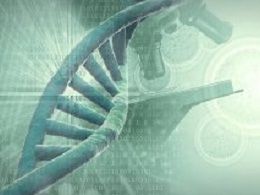Article
Uncovering the Genetic Basis of Multiple Sclerosis
Author(s):
By completing the largest ever map of the human genome, researchers believe they are one step closer to understanding diseases.

In an effort to fight diseases such as multiple sclerosis (MS), researchers have published the most comprehensive map of the human epigenome ever in Nature.
Researchers from the Washington University School of Medicine in St. Louis created the largest ever collection of human epigenomes for primary cells and tissues to address the need for maps of genetic variations in human disease. The researchers described 111 types of cells and tissues to map the genome, and they expect many other cell types’ mapping to be available soon.
“We’ve only scratched the surface of the human epigenome, but this massive resource marks the beginning of an era,” said a principal investigator of the epigenome mapping project, Ting Wang, PhD, assistant professor of genetics, in a press release. “We can now begin to describe humans in molecular detail. We also can look closely at the epigenetic differences between cell types. We don’t yet understand what those differences mean or what epigenetic changes drive cell specialization or the initiation of disease. But that’s where we’re headed. This resource opens up many new doors in biology and the biomedical sciences.”
The epigenome additionally examined the intersection of the genome in the environment, fueling the nature versus nurture debate. The epigenome is believed to be able to determine and encourage people’s lifestyle or pharmaceuticals intake if changes are needed to be made.
“This (resource) represents a major advance in the ongoing effort to understand how the 3 billion letters of an individual’s DNA instruction book are able to instruct vastly different molecular activities, depending on the cellular context,” continued NIH Director Francis S. Collins, MD, PhD. “This outpouring of data rich publications, produced by a remarkable team of creative scientists, provides powerful momentum for the rapidly growing field of epigenomics.”
In order to navigate the massive amounts of data, the researchers developed a browser to allow for faster and more user friendly searchers of the data. This permits scientists worldwide to study specific cells of healthy patients to determine the differences from, for example, MS or Alzheimer’s disease patients. More details are published in Nature Biotechnology.
In a paper published in Nature Communications, researchers describe DNA methylation, which is marked in the epigenome as well. There were 18,000 regions of the genome that were identified methylation in 25 human cell and tissue types. The authors expect this discovery to aid in the further understanding of diseases like cancer, where methylation is disrupted.



